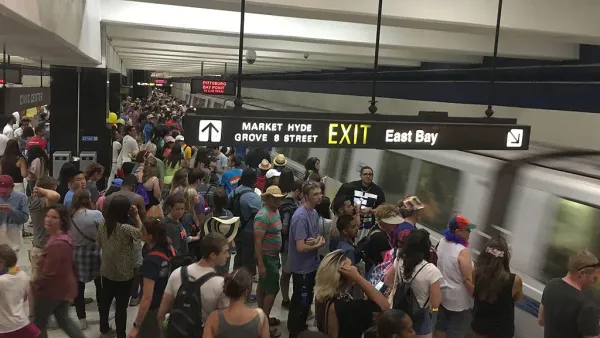An 800-mile HOT lane 'network' proposed for the Bay Area is now a bill in the state legislature. The MPO estimates it will reduce congestion and emissions while raising funds for transit. U.C. Berkeley's Pravin Varaiya insists it will lose money.
The Metropolitan Transportation Commission "estimates that turning the Bay Area's 500 miles of carpool lanes into toll lanes, along with adding 300 miles of new toll lanes, will generate $6.1 billion in profit over the next 25 years.
But one UC Berkeley engineering professor who has studied the effectiveness of carpool and toll lanes says the idea is wildly optimistic, and he predicts it will ultimately waste huge amounts of taxpayer money.
For years, professor Pravin Varaiya of UC Berkeley's electrical engineering and computer sciences department has pored over extensive amounts of CalTrans data. He concludes that the new toll lanes will lose money for two main reasons:
* In less-congested areas, not enough people will use them.
* On the Bay Area's more-congested freeways, heavy demand from carpoolers won't leave enough room for those single-occupancy vehicles that would pay the new toll.
"I'm willing to bet that the toll lanes won't be able recover operating costs, let alone the capital costs," he said.
Thanks to Justin Horner
FULL STORY: Bay Area Toll Lanes Could Lose Money

National Parks Layoffs Will Cause Communities to Lose Billions
Thousands of essential park workers were laid off this week, just before the busy spring break season.

Retro-silient?: America’s First “Eco-burb,” The Woodlands Turns 50
A master-planned community north of Houston offers lessons on green infrastructure and resilient design, but falls short of its founder’s lofty affordability and walkability goals.

Delivering for America Plan Will Downgrade Mail Service in at Least 49.5 Percent of Zip Codes
Republican and Democrat lawmakers criticize the plan for its disproportionate negative impact on rural communities.

Test News Post 1
This is a summary

Test News Headline 46
Test for the image on the front page.

Balancing Bombs and Butterflies: How the National Guard Protects a Rare Species
The National Guard at Fort Indiantown Gap uses GIS technology and land management strategies to balance military training with conservation efforts, ensuring the survival of the rare eastern regal fritillary butterfly.
Urban Design for Planners 1: Software Tools
This six-course series explores essential urban design concepts using open source software and equips planners with the tools they need to participate fully in the urban design process.
Planning for Universal Design
Learn the tools for implementing Universal Design in planning regulations.
EMC Planning Group, Inc.
Planetizen
Planetizen
Mpact (formerly Rail~Volution)
Great Falls Development Authority, Inc.
HUDs Office of Policy Development and Research
NYU Wagner Graduate School of Public Service




























